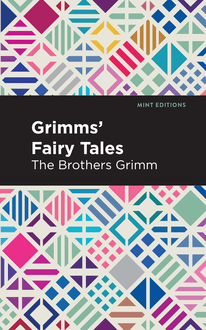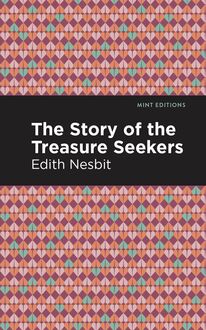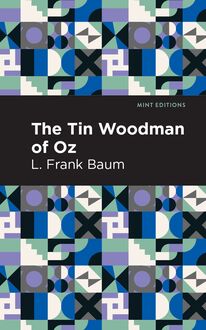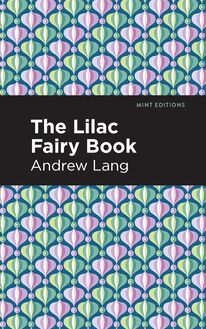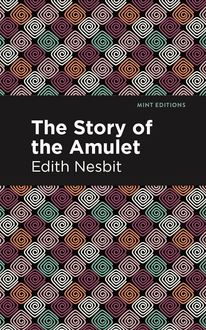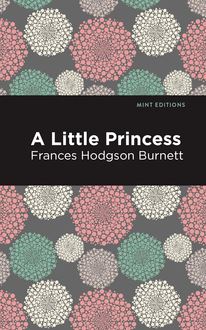-
 Univers
Univers
-
 Ebooks
Ebooks
-
 Livres audio
Livres audio
-
 Presse
Presse
-
 Podcasts
Podcasts
-
 BD
BD
-
 Documents
Documents
-
- Cours
- Révisions
- Ressources pédagogiques
- Sciences de l’éducation
- Manuels scolaires
- Langues
- Travaux de classe
- Annales de BEP
- Etudes supérieures
- Maternelle et primaire
- Fiches de lecture
- Orientation scolaire
- Méthodologie
- Corrigés de devoir
- Annales d’examens et concours
- Annales du bac
- Annales du brevet
- Rapports de stage
La lecture à portée de main
Vous pourrez modifier la taille du texte de cet ouvrage
Découvre YouScribe en t'inscrivant gratuitement
Je m'inscrisDécouvre YouScribe en t'inscrivant gratuitement
Je m'inscrisEn savoir plus
Vous pourrez modifier la taille du texte de cet ouvrage
En savoir plus

Description
The Ruby of Kishmoor (1908) is a deceptively simple story by renowned author and illustrator Howard Pyle. From the very beginning, it concerns itself with the mystery behind appearances, with all that lies hidden beneath the veil of a first glance.
“You may never know what romantic aspirations may lie hidden beneath the most sedate and sober demeanor.” This is how the reader is introduced to Jonathan Rugg, a young Quaker from Philadelphia who unwittingly stumbles onto the adventure of a lifetime. In Kingston, Jamaica to work as a merchant, Rugg is an average, unassuming man. When Jonathan meets a woman veiled in silver fabric—and shrouded in mystery—she gives him a ball of ivory that carries with it a dreadful curse. Meanwhile, the fabled Ruby of Kishmoor has disappeared. The pirate Captain Robertson Keitt, a former merchant whose escapades in Africa and the Middle East have passed into legend, has been murdered by his crew, who suspected their captain of conspiring against them to steal the ruby. As Rugg is plunged into peril, a mystery unravels unlike any other. Howard Pyle’s The Ruby of Kishmoor is the tale of a man whose “serious” appearance conceals an abundant “appetite for romantic adventure.”
For the reader looking to satisfy a craving for adventure, this is a work which rivals the better-known classic of swashbuckling terror, Robert Louis Stevenson’s Treasure Island (1882). Curiously enough, Pyle’s student N.C. Wyeth would go on to illustrate a classic edition of Stevenson’s work in 1911, and was certainly influenced by his teacher’s well-documented skill for painting pirates and scenes on the high seas. The Ruby of Kishmoor, written and illustrated entirely by Pyle, is a book for children and adults alike.
With a beautifully designed cover and professionally typeset manuscript, this new edition of Howard Pyle’s The Ruby of Kishmoor is a thrilling work of adventure reimagined for modern readers.
Sujets
Informations
| Publié par | Mint Editions |
| Date de parution | 17 novembre 2020 |
| Nombre de lectures | 0 |
| EAN13 | 9781513267098 |
| Langue | English |
| Poids de l'ouvrage | 2 Mo |
Informations légales : prix de location à la page 0,0250€. Cette information est donnée uniquement à titre indicatif conformément à la législation en vigueur.
Extrait
The Ruby of Kishmoor
Howard Pyle
The Ruby of Kishmoor was first published in 1912.
This edition published by Mint Editions 2020.
ISBN 9781513266657 | E-ISBN 9781513267098
Published by Mint Editions®
minteditionbooks.com
Publishing Director: Jennifer Newens
Design & Production: Rachel Lopez Metzger
Typesetting: Westchester Publishing Services
C ONTENTS
P ROLOGUE
1. J ONATHAN R UGG
2. T HE M YSTERIOUS L ADY WITH THE S ILVER V EIL
3. T HE T ERRIFIC E NCOUNTER WITH THE O NE - EYED L ITTLE G ENTLEMAN IN B LACK
4. T HE M OMENTOUS A DVENTURE WITH THE S TRANGER WITH THE S ILVER E AR - RINGS
5. T HE U NEXPECTED E NCOUNTER WITH THE S EA - CAPTAIN WITH THE B ROKEN N OSE
6. T HE C ONCLUSION OF THE A DVENTURE WITH THE L ADY WITH THE S ILVER V EIL
E PILOGUE
P ROLOGUE
A very famous pirate of his day was Captain Robertson Keitt.
Before embarking upon his later career of infamy, he was, in the beginning, very well known as a reputable merchant in the island of Jamaica. Thence entering, first of all, upon the business of the African trade, he presently, by regular degrees, became a pirate, and finally ended his career as one of the most renowned freebooters of history.
The remarkable adventure through which he at once reached the pinnacle of success, and became in his profession the most famous figure of his day, was the capture of the Rajah of Kishmoor’s great ship, The Sun of the East . In this vessel was the Rajah’s favorite Queen, who, together with her attendants, were set upon a pilgrimage to Mecca. The court of this great Oriental potentate was, as may be readily supposed, fairly a-glitter with gold and jewels, so that, what with such personal adornments that the Queen and her attendants had fetched with them, besides an ample treasury for the expenses of the expedition, an incredible prize of gold and jewels rewarded the freebooters for their successful adventure.
Among the precious stones taken in this great purchase was the splendid ruby of Kishmoor. This, as may be known to the reader, was one of the world’s greatest gems, and was unique alike both for its prodigious size and the splendor of its color. This precious jewel the Rajah of Kishmoor had, upon a certain occasion, bestowed upon his Queen, and at the time of her capture she wore it as the centre-piece of a sort of a coronet which encircled her forehead and brow.
The seizure by the pirate of so considerable a person as that of the Queen of Kishmoor, and of the enormous treasure that he found aboard her ship, would alone have been sufficient to have established his fame. But the capture of so extraordinary a prize as that of the ruby—which was, in itself, worth the value of an entire Oriental kingdom—exalted him at once to the very highest pinnacle of renown.
Having achieved the capture of this incredible prize, our captain scuttled the great ship and left her to sink with all on board. Three Lascars of the crew alone escaped to bear the news of this tremendous disaster to an astounded world.
As may readily be supposed, it was now no longer possible for Captain Keitt to hope to live in such comparative obscurity as he had before enjoyed. His was now too remarkable a figure in the eyes of the world. Several expeditions from various parts were immediately fitted out against him, and it presently became no longer compatible with his safety to remain thus clearly outlined before the eyes of the world. Accordingly, he immediately set about seeking such security as he might now hope to find, which he did the more readily since he had now, and at one cast, so entirely fulfilled his most sanguine expectations of good-fortune and of fame.
Thereafter, accordingly, the adventures of our captain became of a more apocryphal sort. It was known that he reached the West Indies in safety, for he was once seen at Port Royal and twice at Spanish Town, in the island of Jamaica. Thereafter, however, he disappeared; nor was it until several years later that the world heard anything concerning him.
One day a certain Nicholas Duckworthy, who had once been gunner aboard the pirate captain’s own ship, The Good Fortune , was arrested in the town of Bristol in the very act of attempting to sell to a merchant of that place several valuable gems from a quantity which he carried with him tied up in a red bandanna handkerchief.
In the confession of which Duckworthy afterward delivered himself he declared that Captain Keitt, after his great adventure, having sailed from Africa in safety, and so reached the shores of the New World, had wrecked The Good Fortune on a coral reef off the Windward Islands; that he then immediately deserted the ship, and together with Duckworthy himself, the sailing-master (who was a Portuguese), the captain of a brig The Bloody Hand (a consort of Keitt’s), and a villainous rascal named Hunt (who, occupying no precise position among the pirates, was at once the instigator of and the partaker in the greatest part of Captain Keitt’s wickednesses), made his way to the nearest port of safety. These five worthies at last fetched the island of Jamaica, bringing with them all of the jewels and some of the gold that had been captured from The Sun of the East .
But, upon coming to a division of their booty, it was presently discovered that the Rajah’s ruby had mysteriously disappeared from the collection of jewels to be divided. The other pirates immediately suspected their captain of having secretly purloined it, and, indeed, so certain were they of his turpitude that they immediately set about taking means to force a confession from him.
In this, however, they were so far unsuccessful that the captain, refusing to yield to their importunities, had suffered himself to die under their hands, and had so carried the secret of the hiding-place of the great ruby—if he possessed such a secret—along with him.
Duckworthy concluded his confession by declaring that in his opinion he himself, the Portuguese sailing-master, the captain of The Bloody Hand , and Hunt were the only ones of Captain Keitt’s crew who were now alive; for that The Good Fortune must have broken up in a storm, which immediately followed their desertion of her; in which event the entire crew must inevitably have perished.
It may be added that Duckworthy himself was shortly hanged, so that, if his surmise was true, there was now only three left alive of all that wicked crew that had successfully carried to its completion the greatest adventure which any pirate in the world had ever, perhaps, embarked upon.
Chapter 1
J ONATHAN R UGG
Y ou may never know what romantic aspirations may lie hidden beneath the most sedate and sober demeanor.
To have observed Jonathan Rugg, who was a tall, lean, loose-jointed young Quaker of a somewhat forbidding aspect, with straight, dark hair and a bony, overhanging forehead set into a frown, a pair of small, deep-set eyes, and a square jaw, no one would for a moment have suspected that he concealed beneath so serious an exterior any appetite for romantic adventure.
Nevertheless, finding himself suddenly transported, as it were, from the quiet of so sober a town as that of Philadelphia to the tropical enchantment of Kingston, in the island of Jamaica, the night brilliant with a full moon that swung in an opal sky, the warm and luminous darkness replete with the mysteries of a tropical night, and burdened with the odors of a land breeze, he suddenly discovered himself to be overtaken with so vehement a desire for some unwonted excitement that, had the opportunity presented itself, he felt
-
 Univers
Univers
-
 Ebooks
Ebooks
-
 Livres audio
Livres audio
-
 Presse
Presse
-
 Podcasts
Podcasts
-
 BD
BD
-
 Documents
Documents
-
Jeunesse
-
Littérature
-
Ressources professionnelles
-
Santé et bien-être
-
Savoirs
-
Education
-
Loisirs et hobbies
-
Art, musique et cinéma
-
Actualité et débat de société
-
Jeunesse
-
Littérature
-
Ressources professionnelles
-
Santé et bien-être
-
Savoirs
-
Education
-
Loisirs et hobbies
-
Art, musique et cinéma
-
Actualité et débat de société
-
Actualités
-
Lifestyle
-
Presse jeunesse
-
Presse professionnelle
-
Pratique
-
Presse sportive
-
Presse internationale
-
Culture & Médias
-
Action et Aventures
-
Science-fiction et Fantasy
-
Société
-
Jeunesse
-
Littérature
-
Ressources professionnelles
-
Santé et bien-être
-
Savoirs
-
Education
-
Loisirs et hobbies
-
Art, musique et cinéma
-
Actualité et débat de société
- Cours
- Révisions
- Ressources pédagogiques
- Sciences de l’éducation
- Manuels scolaires
- Langues
- Travaux de classe
- Annales de BEP
- Etudes supérieures
- Maternelle et primaire
- Fiches de lecture
- Orientation scolaire
- Méthodologie
- Corrigés de devoir
- Annales d’examens et concours
- Annales du bac
- Annales du brevet
- Rapports de stage
